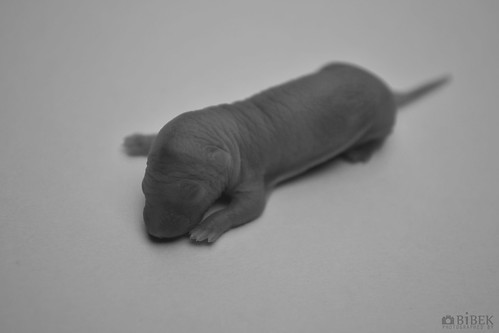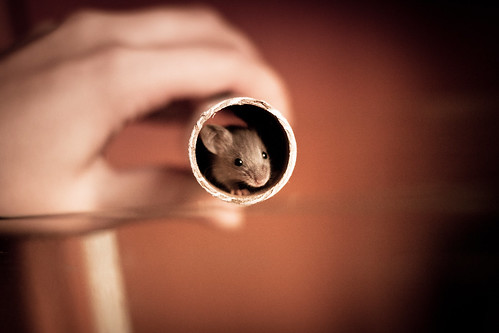Yes, Bearded dragons can eat pinkies, which are newborn mice, but it depends on the age of the dragon. Pinkies are tiny and have not yet developed any claws or teeth, making them easily digestible by adult bearded dragons.
While they are high in fat and protein, which can be beneficial for boosting a dragon’s health, they can also cause fatty liver disease and shorten the dragon’s lifespan if fed too often.
Some sources recommend only feeding pinkies occasionally or not at all, while others suggest that they can be included as part of a balanced diet depending on the age and size of the dragon. It is important to consult with a veterinarian or experienced reptile owner before making any significant changes to a bearded dragon’s diet.
Pinkies are high in fat and protein, which makes them ideal for boosting a dragon that may need it, such as a female who has just laid eggs.
However, feeding pinkies too often can overload a dragon’s system and cause health issues such as obesity or gout.
For this reason, adult dragons should be fed pinkies at most once per month.
How Often Should Bearded Dragons Be Fed Pinkies
Bearded dragons are a popular pet choice amongst reptile enthusiasts.
Fascinatingly, they can grow up to two feet long and weigh nearly four pounds.
When it comes to feeding them pinkies (baby mice), it’s important to understand the safety requirements and nutrition needs of these creatures before deciding how often you should be providing them with this food source.
The frequency of feeding bearded dragon pinkies depends on the age of your particular pet.
Younger dragons require more frequent feedings since their growth rate is higher than that of adults; every other day or even daily feedings may be beneficial in order to ensure proper development.
Older dragons need less regular meal times, as they have slowed down in terms of growth and become more sedentary; once-weekly feedings should suffice here.
Furthermore, due to potential bacterial contamination, any uneaten pinkies should not remain stored for longer than 24 hours after being served – otherwise, new fresh ones will be necessary for future feedings.
When considering whether it’s ok to provide bearded dragons with pinkies as part of their diet regimen, make sure you look into all factors involved: from understanding their nutritional requirements to maintaining safe storage habits when dealing with such prey items.
What Are The Risks Of Feeding Pinkies To Bearded Dragons
Yes, it is alright to feed bearded dragons pinkies.
However, there are some risks that need to be considered when doing so. It is important for the health and well-being of these beloved pets that their owners understand those dangers and take proper precautions when feeding them.
First off, there is a risk of overfeeding due to the small size of the pinkie mouse.
Bearded dragons can easily consume more than they should in one sitting, leading to nutrition problems down the line such as obesity or vitamin deficiency.
Therefore, it’s advisable to only offer two or three pinkies at a time rather than an entire litter.
Second, there is a risk of infection involved with feeding unclean raw meat like pinkies mice.
Make sure you obtain your pet food from reputable sources and observe best practices when handling them (e.g., wash hands before/after touching).
Thirdly, if not properly cooked prior to being fed, parasites contained within the pinky could pass on diseases that may cause serious health concerns for your dragon.
In order to minimize potential harm associated with offering pinkies as part of your dragon’s diet, here are 3 practical tips:
- Always follow recommended feeding guidelines;
- Purchase from reliable suppliers who guarantee cleanliness and safety;
- Ensure food items have been appropriately prepared prior to consumption by either freezing or cooking thoroughly.
By taking these steps into consideration when providing meals consisting of pinkies for your bearded dragon, you can ensure its long-term nutritional balance while avoiding any possible dangerous repercussions linked with improper feeding habits.
What Are Some Alternative Food Options For Bearded Dragons
Bearded dragons, a breed of lizards native to Australia and popular as pets, require food that replicates their natural diet.
Pinkies are baby mice that can be fed to beardies, but there is also an array of alternatives for those who wish to feed something different.
Here’s a quick look at some alternatives:
| Food | Benefits |
|---|---|
| Mealworms | High in protein with low-fat content |
| Superworms | High calcium content; more nutritious than mealworms |
| Crickets | Live prey option; provide stimulation for the dragon |
| Fruits & Veggies | Provide variety and essential vitamins&minerals for health maintenance |
To these foods, bearded dragons should have access to fresh water daily.
A balanced diet consisting of live insects along with fruits and veggies will help ensure your pet stays healthy and happy.
As long as you feed your bearded dragon in moderation and offer variety, they should thrive.
What Types Of Pinkies Are Safe For Bearded Dragons?
Yes, it is ok to feed bearded dragons pinkies if they are the right type.
But what types of pinkies are safe for beardies? Well, there are a few acceptable options when considering lizard pinkies as part of your reptile’s nutrition.
The most suitable option would be small rodents that have been frozen and stored in their own juices; this will provide a more natural diet by allowing them to eat live prey but without any risk or danger posed by consuming the wrong foods.
These can usually be purchased at pet stores or online retailers that specialize in reptile nutrition.
You should always check with your vet before feeding anything new to ensure that your beardie’s diet is complete and balanced with all the necessary nutrients.
To these frozen feeders, there are other alternatives such as canned insects or dried mealworms which also offer high-quality nutrition for your lizard companion.
As long as the food is of good quality and comes from a reputable source, then it should be safe to give them as occasional treats.
Ultimately, providing variety in your bearded dragon’s diet ensures optimal health and well-being while offering an enjoyable eating experience.
How To Prepare And Store Pinkies
In order to feed bearded dragons pinkies, it is important to know how to prepare and store them correctly.
To begin with, the mouse should be frozen for at least 24 hours before feeding in order to kill any parasites or bacteria that could otherwise harm the dragon.
It is then necessary to handle and sanitize the pinky prior to feeding.
This can be done by washing hands thoroughly before handling the pinky, as well as wiping down any surfaces which may have come into contact with it.
Next, when preparing the pinky for feeding, make sure not to touch its internal organs—as doing so could spread harmful bacteria inside of your dragon’s mouth.
Finally, once prepared and fed, it is essential to properly store leftover pinkies in an airtight container in a refrigerator until they are used again.
This will help ensure that no further contamination occurs from improper storage methods.
Keeping these tips in mind will help guarantee the safe handling and consumption of pinkies for your bearded dragon.
Cleanliness And Sanitation When Handling Pinkies
Having discussed the preparation and storage of pinkies, it is essential to now discuss cleanliness and sanitation when handling them.
When feeding bearded dragons with live prey such as pinkies, it is important to ensure that all applicable hygiene requirements are met.
This includes proper cleaning and disinfection of any surfaces or equipment used in handling the feeder animals, as well as following certain protocols while caring for them.
Here are four tips to help promote safe practices:
- Wash your hands before and after handling pinkies or their enclosures. It helps to minimize the spread of germs from people’s hands onto the food source itself which could be dangerous if consumed by a bearded dragon.
- Clean cages regularly – this means removing debris and uneaten food every day, wiping down walls and floors weekly, and doing full cage/tank changes once per month depending on how frequently you handle your pet’s food sources.
- Be aware of temperature fluctuations – temperatures can fluctuate quickly within an enclosure so try to keep track of these changes throughout the day and adjust accordingly if needed. This is especially important if you’re dealing with young or smaller-sized animals like mice or rats whose bodies may not be able to withstand extreme temperatures as easily as larger ones like lizards or snakes do.
- Check regularly for parasites– Parasites can infect both wild-caught prey items as well as captive-bred ones so look out for signs of infestation such as mites or ticks on the animal’s skin, feces containing worms, etc., before introducing them into your beardie’s habitat.
By following these simple guidelines one can effectively reduce risk factors associated with improperly handled pinkies being fed to a bearded dragon in captivity.
Furthermore, it also promotes healthier living conditions for our furry friends who depend on us for care.


